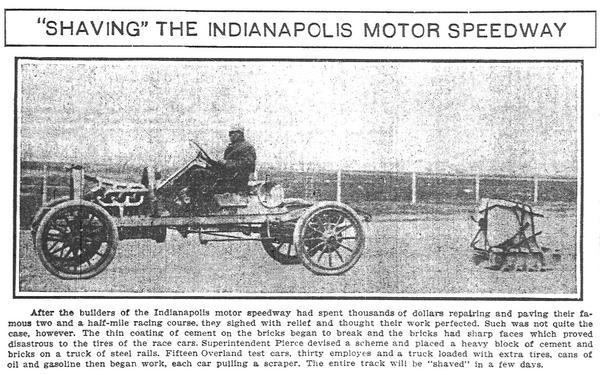- 1890s Cars
- Barney Oldfield Images
- Oldfield - Petersen
- Beer
- Early Auto Industry
- Uniontown - Marci McGuinness
- General Period Clip Art
- Early Race Related Clip Art
- Advertising and Editorial Cartoons
- Early Indianapolis
- IMS Construction
- Indianapolis Speedway
- First IMS Auto Races
- Failed 1909 Air Show
- 1909 IMS Balloon Races
- 1909 IMS Motorcycle Meet
- 1910 Indianapolis Auto Show
- 1913 Indianapolis 500
- 1919 Indianapolis 500
- Joe Dawson
- WWI "500" Winner Draft Cards
- Frank Di Buglione (off the wall art, LLC)
- Gilbert Art
- Carl Graham Fisher
- IMS Hall of Fame Museum
- Alco at 100th Anniversary
- Frederic Matile - Morris Park
- Miami-Fulford Speedway
- Paul Sheedy Collection
- Early Wyoming Racing - 1909 - 1919
- Personalities
- Early Racing Images
- Glidden Tour
- 1909 Cobe Trophy
- Fairmount Park & Belmont Estates
- Early Santa Monica
- Don Radbruch Collection
- Jeroen de Boer Collection 1910
- Jeroen de Boer Collection 1912
- Jeroen de Boer Collection 1913
- Jeroen de Boer Collection 1914
- Georges Boillot
- Story's Indianapolis 500 Cars
- Story's Sports Cars
- Story's Grand Prix Cars
- Old School
- Story's Brickyard Sketchbook
Shaving the Brickyard
Photo Gallery Categories
Search
Featured Article
Image of The Week

The travails of the Indianapolis Motor Speedway in its first year of existence are not to be underestimated. The management team's recovery from its utterly disastrous opening events with motorcycles and race cars even put the track's continued operation into question for a brief time with Indiana's Lieutenant Governor calling to outlaw racing.
With the track's crushed stone and tar mix blamed as insufficient to the challenge of providing a safe surface for high-speed competition, Speedway management spared no expense in paving the 2.5-mile oval with 3.2 million bricks. The smoother, more durable surface looked promising during December tests, but in the weeks leading up to the new Brickyard's first race meet in May (1910) the running surface again came into question. As the concrete that had been smeared over the bricks eroded from weather and high speed runs the sharp edges of individual bricks became exposed. These proved exceptionally hard on tires and threatened catastrophic failures.
It's a fair question to ask if IMS officials didn't wonder if they shouldn't have selected creosote wood block as a pavement solution they had once considered. Imagine the frustration of management as they had to wonder, "what next?" In one of the oddest engineering solutions, I have heard officials decided to "shave" the bricks. The methodology was for 30 employees and 15 cars to each drag a device composed of steel, concrete, and bricks to slide along on chains behind the cars and chip at the bricks to take off their rough edges.
The image above comes from the April 27, 1910 Indianapolis News during the time this process was taking place. We can assume it worked as the races a month later were relatively safe. However, tire wear was always a factor which may have been a reflection more on the state of rubber technology than the running surface.
| Attachment | Size |
|---|---|
| BrickyardShaveNews042710.jpg | 88.46 KB |
